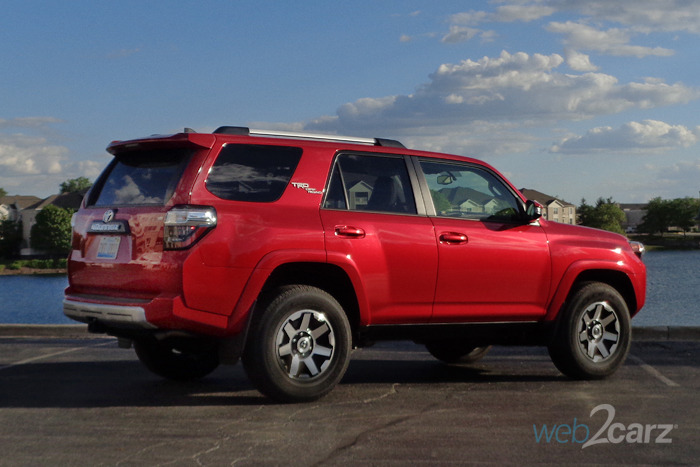
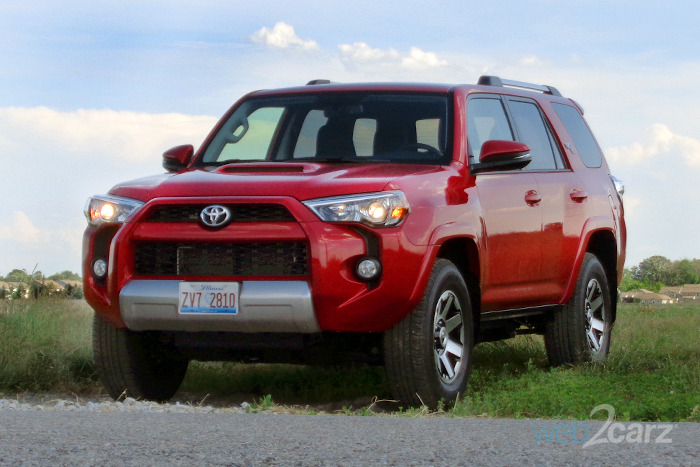

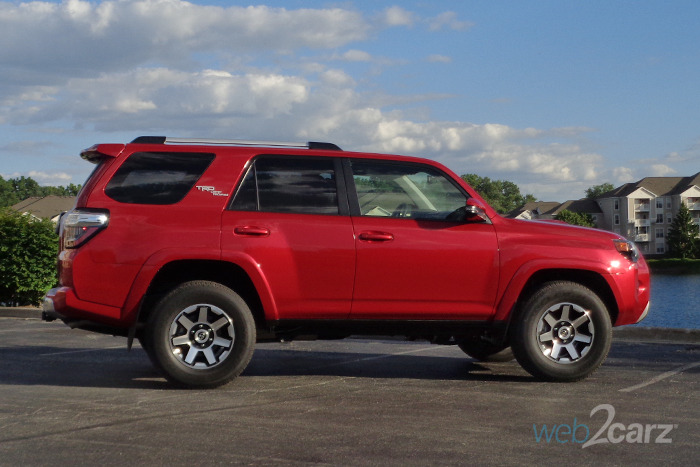
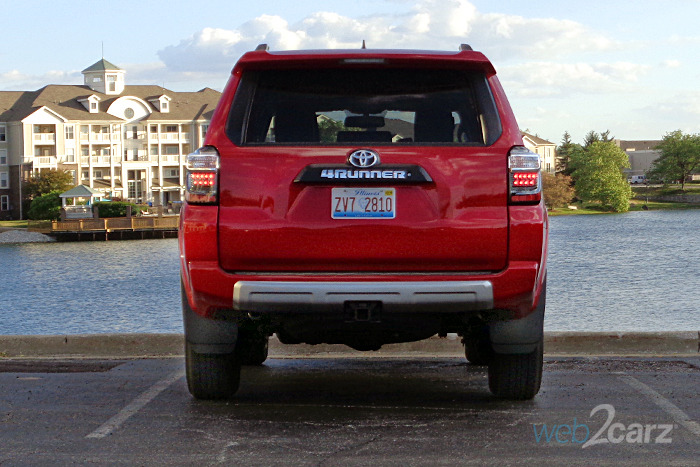
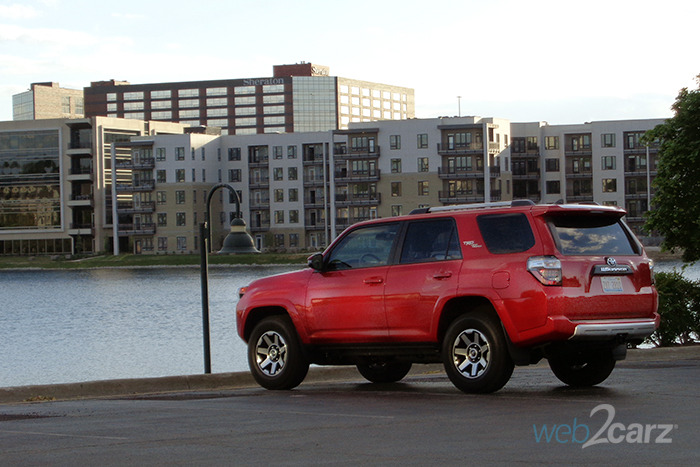

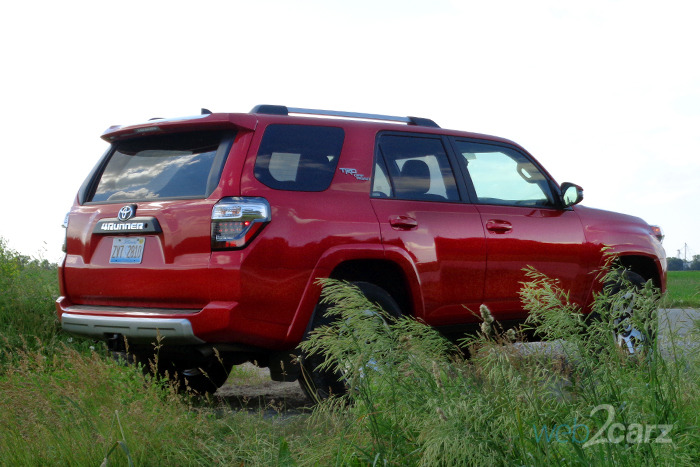
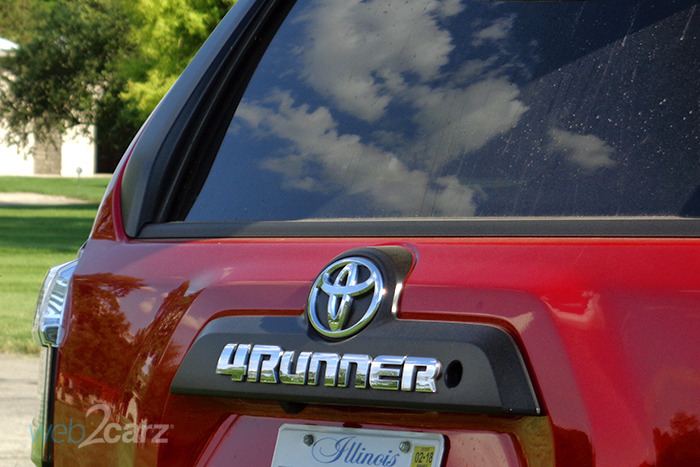
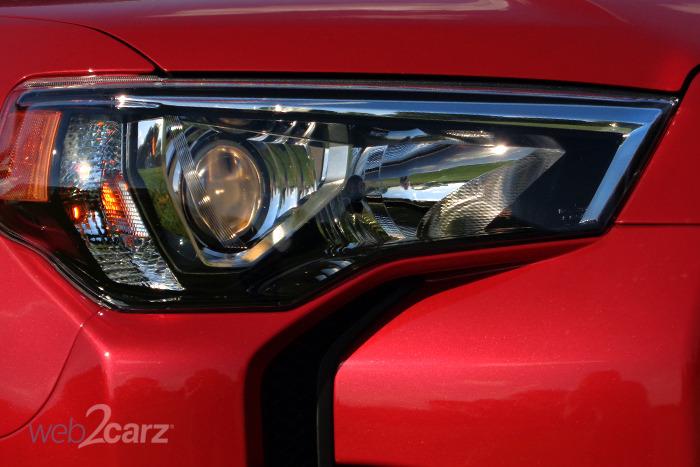
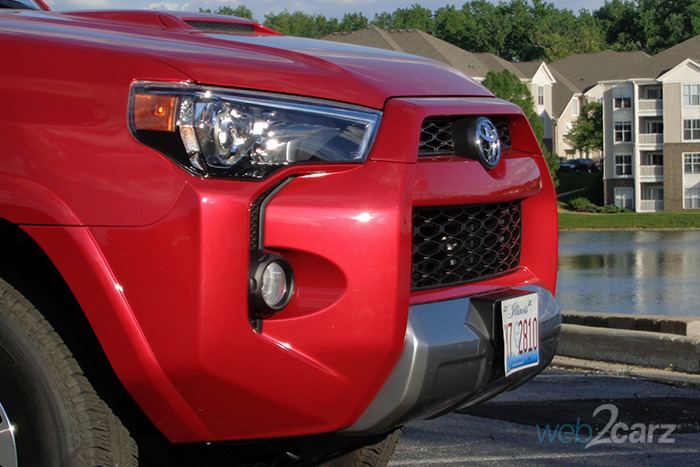
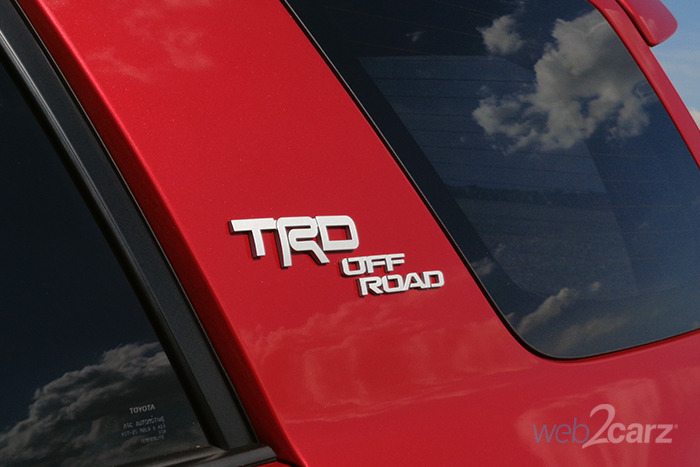
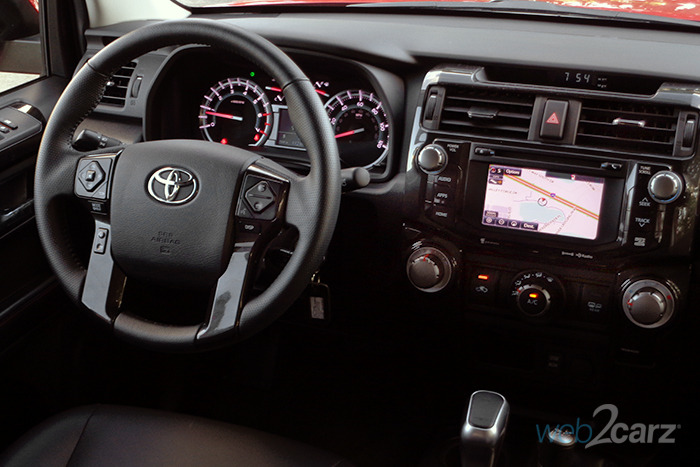
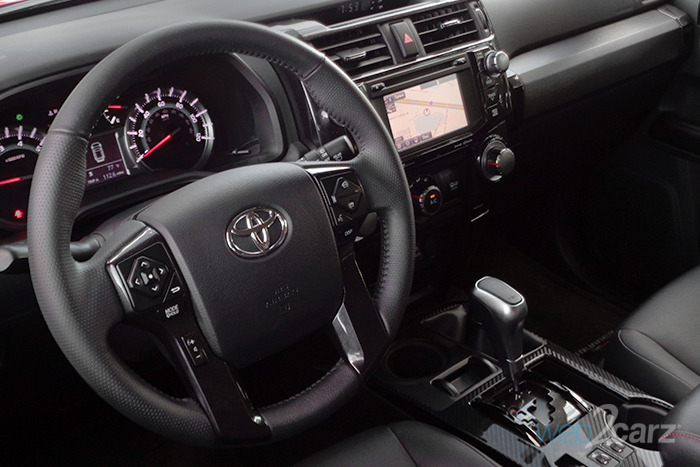
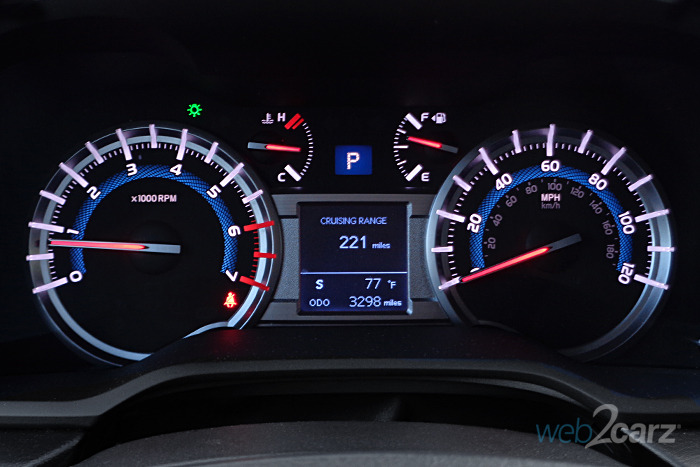

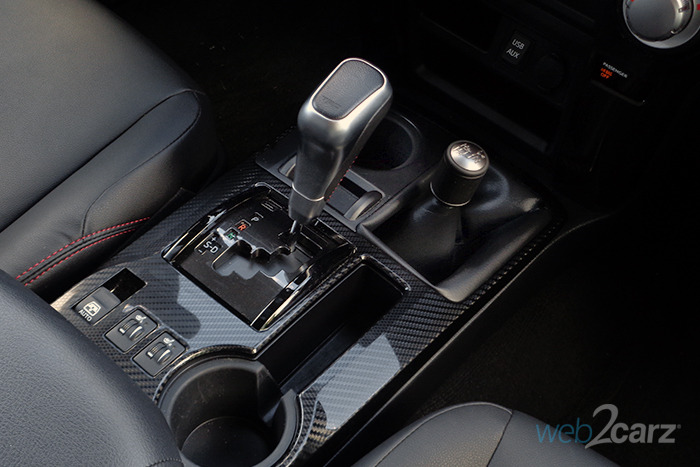
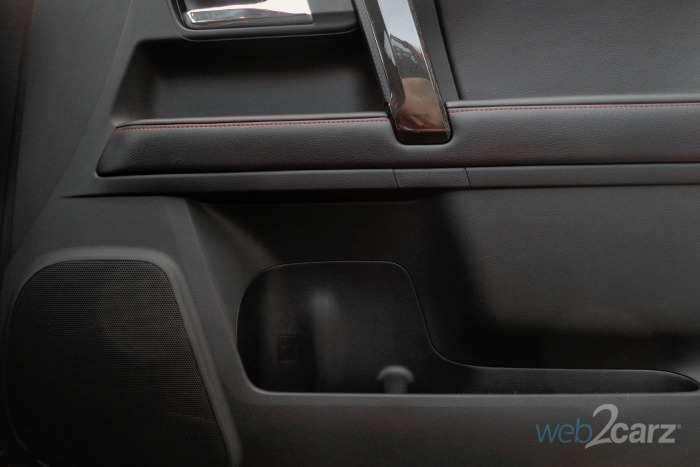
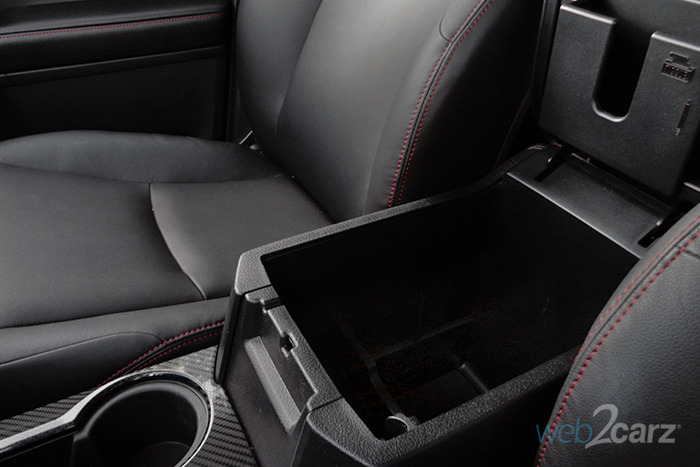

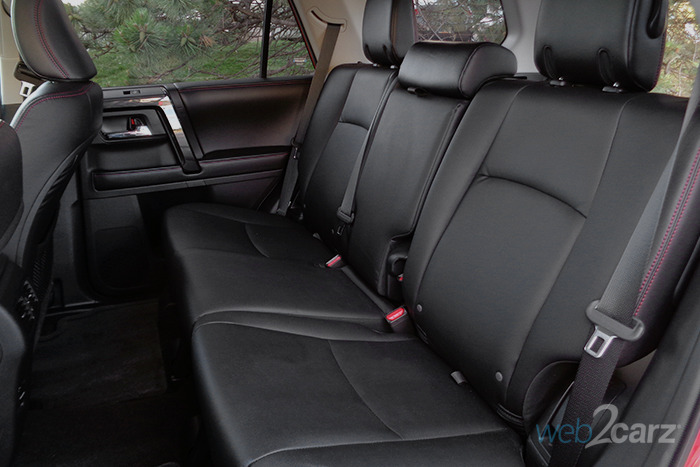
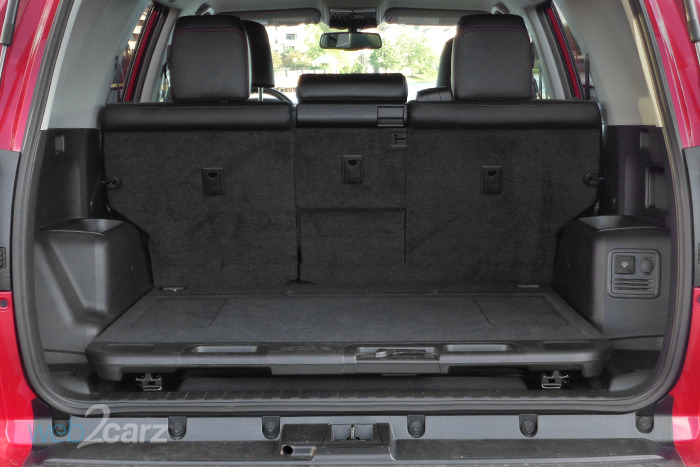
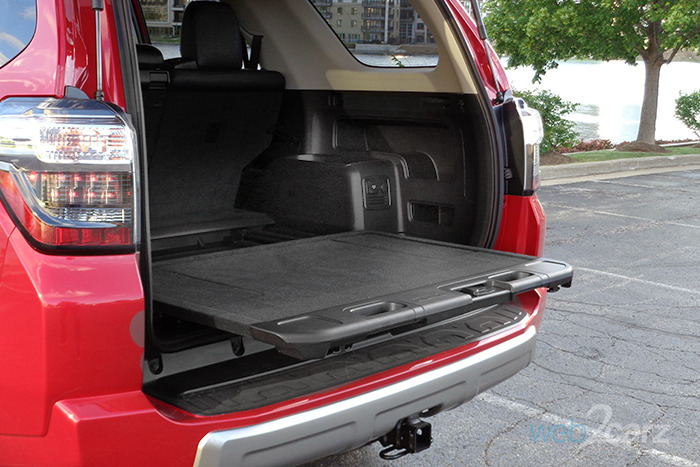
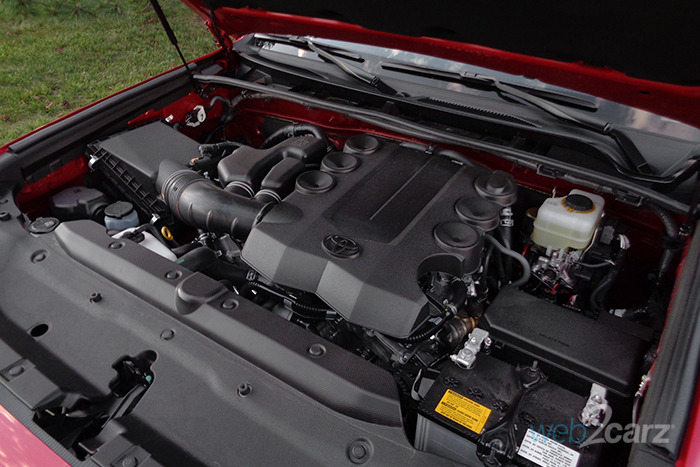
























Wade Thiel, Senior Staff Writer
 | Positives: Good visibility, quiet and comfortable on road, tons of off-road equipment, easy to used controls. |
 | Negatives: Softex seats get very hot, large interior controls almost look silly, wimpy climate control system. |
 | Bottom Line: The TRD Off-Road Premium version of the 4Runner has some of the equipment from the TRD Pro, but it is better suited for the street than it's hardcore brother. If you want a tough body-on-frame SUV with serious off-road equipment, but plan on spending a lot of time on the pavement, this may be the perfect ride for you. |
| View Our 2017 Toyota 4Runner Overview |
Driving Experience
7
Unfortunately, we didn’t have time to put the vehicle to the test in an off-road setting, but what we can say is that the model performs well on the street. You sit up higher than most vehicles and feel like you’re king of the road. The burly 4.0-liter V6 engine moves the SUV along nicely and lets you power around people on the highway or beat them off the line at a stoplight. While the 4Runner isn’t as smooth and car-like as many of the other SUVs and crossovers on the road today, it still manages to be enjoyable even on the most mundane of drives.
Ride Quality: The big tires and softer suspension manage to soak up the bumps well, but the rigid body-on-frame construction means you do still feel cracks and gaps in the road surface.
Acceleration: The V6 engine is plenty powerful enough for the 4Runner. It moves the SUV from 0-60 mph in about seven and a half seconds.
Braking: The brakes are strong and progressive with good pedal feel. Be prepared for the nose to dive under heavy braking.
Steering: It’s accurate, well-weighted, and predictable for a SUV based on a truck body. The steering radius could be better.
Handling: The 4Runner handles like a truck. It's fine for commuting and highway cruising but push it very hard, and you’ll find the vehicle’s limits right away. If you want something to carve up a canyon road with, look elsewhere.
Technology
7.5
This generation of the Toyota 4Runner has been around since 2010. That being said, Toyota hasn’t let the model fall too far behind in terms of technology. It received updates in 2014, which added Toyota’s Entune infotainment system. This system has carried over until now.
Infotainment System: The Entune system doesn’t have the best graphics, but it’s easy to use. The 4Runner comes with a 6.1-inch touchscreen that gives you access to a variety of apps and features, including Bluetooth connectivity, Sirius XM radio, navigation, and the Entune App Suite.
Controls: The buttons and knobs for the system are very large. They almost look too big in some cases. That being said they are clearly labeled and easy to use. There’s a good mix of knobs, buttons, and touchscreen controls.
Bluetooth Pairing: Pairing an android phone proved easy and took seconds. Our phone re-paired upon re-entry to the vehicle.
Voice Call Quality: Calls were clear with no interruptions.
Styling
8.9
The 4Runner is one of the toughest-looking SUVs out there today. It has a lot of attitude, and it looks like it will angrily take on just about anything out there. The front of the vehicle is the most intimidating, but its whole boxy body and tall stance help drive home the look.
Front: The fascia sets the tone for the rest of the vehicle. The 4Runner’s aggressive headlights pair nicely with the large split grille and the silver portion of the bumper help bring a little variety to the nose.
Rear: Around back, the 4Runner sports a silver rear diffuser and a pair of LED taillights as well as a few horizontally oriented character lines in the liftgate. This helps keep the boxy rear end from looking too tall.
Profile: From the side you can see that the 4Runner is well-proportioned and has a classic SUV shape. Its 17-inch alloy wheels add a little accent color to the side.
Cabin: The interior of the 4Runner looks a lot like a truck. There are a lot of oversized controls. While Toyota tried to add variation in the interior materials, there’s a lot of dark or black plastic. The faux carbon fiber on the center console actually looks good, something few other automakers pull off.
Comfort
7.8
Despite the 4Runner’s rough and rugged nature, it’s actually a comfortable vehicle. It offers plenty of space for all passengers and provides plenty of room for five adults. It’s definitely not a luxury SUV, though, so if you’re looking for something especially cozy and comfy, you might have to look elsewhere.
Front Seats: The front seats offer a lot of support and a nice, wide area to sit. There’s also plenty of adjustment including lumbar support. The SofTex faux leather material is a convincing substitute for leather, but it gets extremely hot if you’ve parked in the sun.
Rear Seats: The rear seats are clad in the same material and offer a similar amount of support. Legroom is adequate, but not massive. If you want something with more rear legroom, look to the wide array of crossovers out there.
NVH (noise/vibration/harshness): We thought the 4Runner might be problematic when it came to noise, but it wasn’t. It’s quiet on the road, and there’s little tire or road noise that makes it into the cabin. The vehicle feels solid and well-built, too.
Visibility: One of the 4Runner’s strong suits is visibility. You sit up high and can see the road in basically all directions easily. The backup camera makes reversing in tight situations easy as well.
Climate: We were thoroughly disappointed with the quality of the climate control system. It’s easy to use but felt underpowered for the 4Runner’s cabin.
Safety
6.9
The 4Runner’s design is aging and that flaw shows itself in its safety ratings. The model doesn’t achieve the highest ratings from either the IIHS or the NHTSA. Still, it manages to provide decent protection and some modern safety equipment.
IIHS Rating: The 4Runner received a “marginal†rating in the small overlap front crash test and a “good†rating in all other crash tests. It has no score for crash avoidance and mitigation technology, and it was rated “marginal for LATCH system ease of use.
NHTSA Rating: The government awarded the 4Runner four stars overall. That score was made up of a four-star rating for the frontal crash test, a five star rating for the side crash test, and a three star rating for the rollover crash test.
Standard Tech: The 4Runner does come with a fair amount of standard safety equipment. It includes stability control, traction control, ABS with electronic brake force distribution, and brake assist with smart stop technology.
Optional Tech: None.
Storage/Cargo
8.9
The 4Runner has a number of storage spaces placed throughout the cabin. There are more than we expected and they’re all generally pretty easy to use. The cargo space, too, is easier to access and use than we expected. The available sliding rear cargo deck is a cool idea, but a feature we don’t expect many people to take advantage of.
Storage Space: There is a generous space under the armrest for medium sized items. In front of that is the center console with two cup holders a slot for your smartphone and a couple other spots for small items. Beneath the climate controls on the dash, there are also a few small compartments for other electronics or personal carry items.
Cargo Room: The cargo area feels large and easy to use thanks to its flat loading floor. There are two areas above the wheel wells that eat into cargo space, but Toyota smartly placed little storage bins on top of those. Our test vehicle came equipped with the sliding rear cargo deck with an under-floor storage compartment. The deck slides out to make it easier to load heavy items. It saves you from having to reach all the way into the cargo area and strain your back. It also doubles as a perfect tailgating seat. The under-floor storage compartment is nice for small items. As helpful as the sliding deck is, at $350 we wonder if people will spend the extra money.
Fuel Economy
5.9
A low point for the 4Runner is its fuel economy. The vehicle’s 4.0-liter V6 engine is simply outdated. The model gets beat by a lot of the competition out there. The Jeep Grand Cherokee, Ford Edge, and even the Dodge Durango do much better in terms of efficiency. If you’re after a fuel-sipping vehicle, this isn’t it.
Observed: 16 mpg
Distance Driven: 212 miles
Driving Factors: We drove the vehicle primarily in the city with only a couple short drives on the highway. The highway trips were short and likely had little impact on the overall mileage.
Audio
8.3
The Entune Premium Audio included with the TRD Off-Road Premium trim level comes with eight speakers. It provides high-quality sound to all areas of the cabin and a wide range of treble and base. However, there are better systems out there, and on the Limited trim level of the 4Runner, there's a JBL system that we assume is superior. Unfortunately, it's not available on the TRD Off-Road trim level.

